Studio Weekly Miro
Other Mars Projects from IAAC MaCAD 2022/23
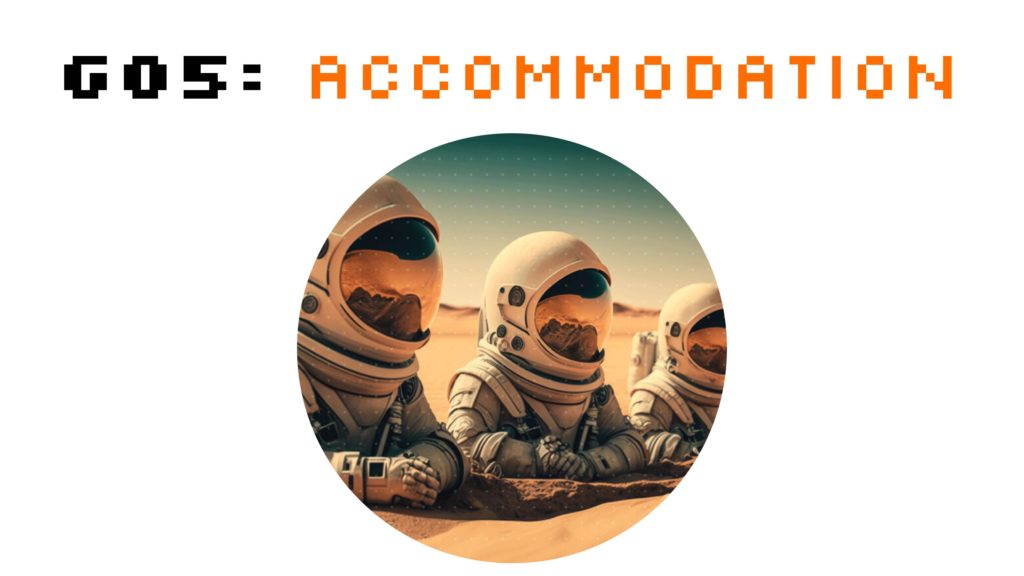
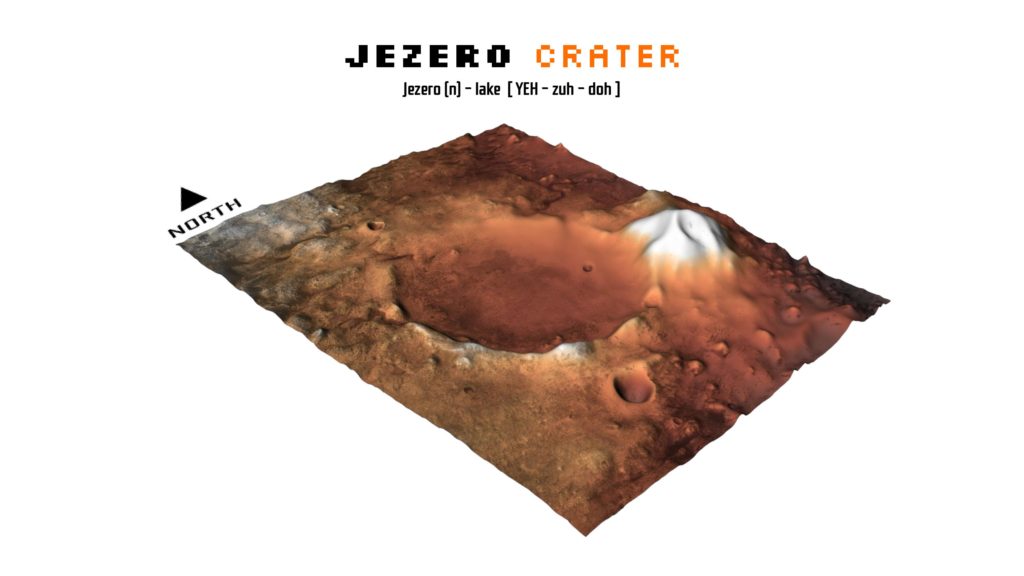
Most 3D models of Mars that we found online had a z-exaggeration. The scale can be difficult to comprehend at first as Jezero crater (above) can fit most of greater London or Barcelona inside of its rim. We were able to get a section of the site from trek.nasa.gov/mars and compare it with similar sections on Earth obtained from Google Earth. We found that the rim of the crater has a similar height and slope to Hout Bay, Cape Town, South Africa. That insight provided us with an array of images that we could easily search on Google Images acting as a proxy for understanding the scale of the Jezero crater.
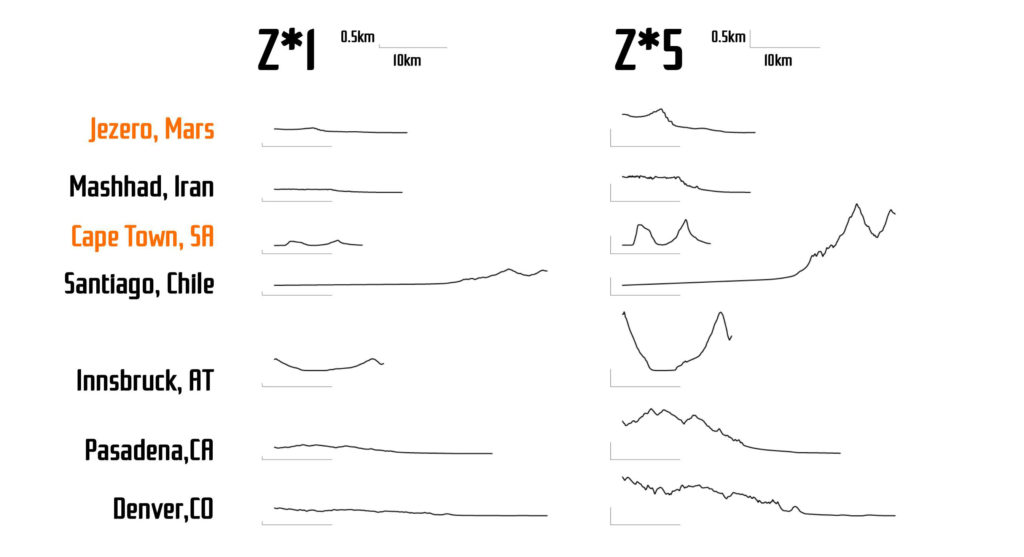
Transportation Costs
The Nasa Perseverance mission landed its rover in Jezero Crater on Mars in 2021. It weighs just over 1 kilogram and the Perseverance mission cost ~$2.7 billion. That is to say the cost of transporting 1 kilogram in that instance was ~$2.7billion. Transporting larger quantities of materials to Mars would obviously be less due to economies of scale. We wanted to investigate what was the cost per kilogram for transportation to Mars would be. The US military uses the term “Scientific Wild-Ass Guess” (SWAG) as a ‘back of the napkin’ calculation when little to no verified data is otherwise available. SpaceX predicted their SWAG as $5,300 per kilogram to transport material to Mars while ChatGPT told us that a settlement for 300 people weighed 55 million kilograms. We estimated transportation costs for construction material to Mars as $291 billion. On Earth, transportation costs are as low as $0.10 per kilogram giving similar costs on Earth as $5.5 million. Local materials became our primary construction material after learning that transportation costs remain outrageously expensive.

Temperature on Mars
Extreme environments also exist here on Earth. The Middle East got oil-rich in the 1960’s as their society transitioned from ‘camel to Cadillac’. Their first skyscrapers were so unsuitable for their environment that no amount of air-conditioning could keep them cool. By 1977, new buildings such as the National Commercial Bank in Jeddah designed by Pritzker Prize winning architect Gordon Bunshaft changed how architects approached designing in hot climates. Bunshaft researched venacular accommodation of Bedouin tribes. He found that for hundreds of year they have faced their tents inward with no openings on the exterior to deal with the harsh environment. That idea was scaled 126m into the sky creating a new benchmark for energy performance in the region that overwhelmingly outperformed everything that came before. Three decades later, buildings would become even smarter offering further efficient energy performance such as zero-energy towers.
Our group wants to skip the inefficient period of architecture in the extreme environment and instead set a benchmark for energy performance in the freezing cold Martian climate as Bunshaft did for in the Middle Eastern desert.
We began looking at thermal inertia maps from trek.nasa.gov/mars preferring sites in Valles Marineris (MC-17, MC-18, MC-19). Other groups preferred Jezero Crater (MC-13). with sites of ~300 Inertia units that are middle of the road with neither the best nor the worst thermal inertia on Mars.
The most interesting diagram that we came across was from NASA. It showed that the temperature difference two meters above the ground versus on the ground surface could vary by 24C to 30C. On further research, we found the Martian nights are colder than the daytime by more than 100C. Temperatures below the ground surface were said to be more stable without the extreme fluctuations that occur slightly above the ground surface.

We knew from these findings that we wanted to place our project inside of a lava tube, a cave, or underground as that is where the highest thermal performance can be achieved on Mars. We looked at various examples of rock-cut architecture on Earth such as Abu Simbel in Egypt (1280 BCE), Petra in Jordan (100CE), Longmen Grottoes in China (500-1100 CE), Ellora Caves in India (700-900 CE), and Cappadocia in Turkey (900 CE). Below is a diagram of an Iranian Shavadun where residents move between the various spaces to optimize their thermal comfort. The rooftop, the courtyard, and underground each offer different levels of comfort throughout various times of the day and different seasons. The underground space has so much thermal mass that it can keep occupants cool even in the hot region of Iran on a hot day.
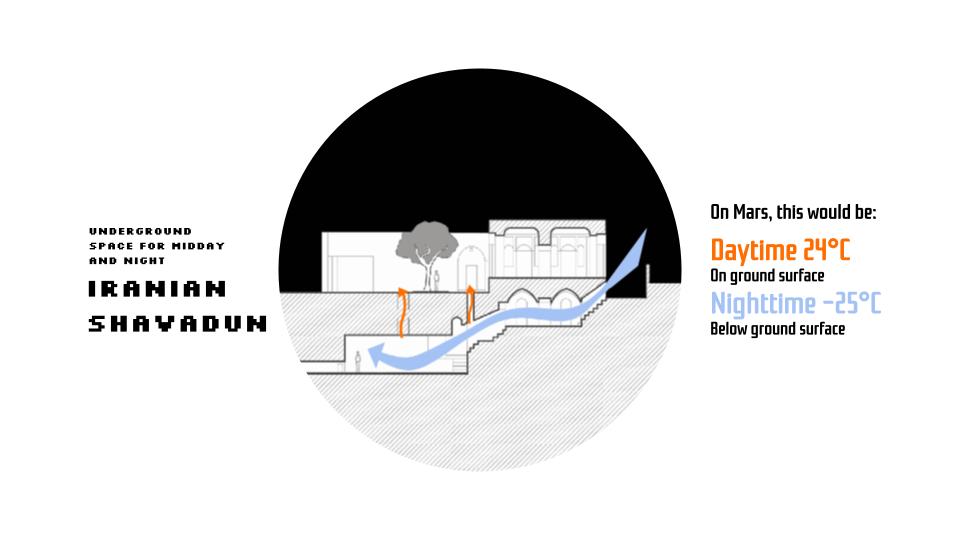
The most famous underground house from science-fiction is the Owen Lars Household from Star Wars which was also the childhood home of Anakin Skywalker. The filming location was in Tunisia where vernacular houses like this can be found. Sections and plans are from Andre Louis
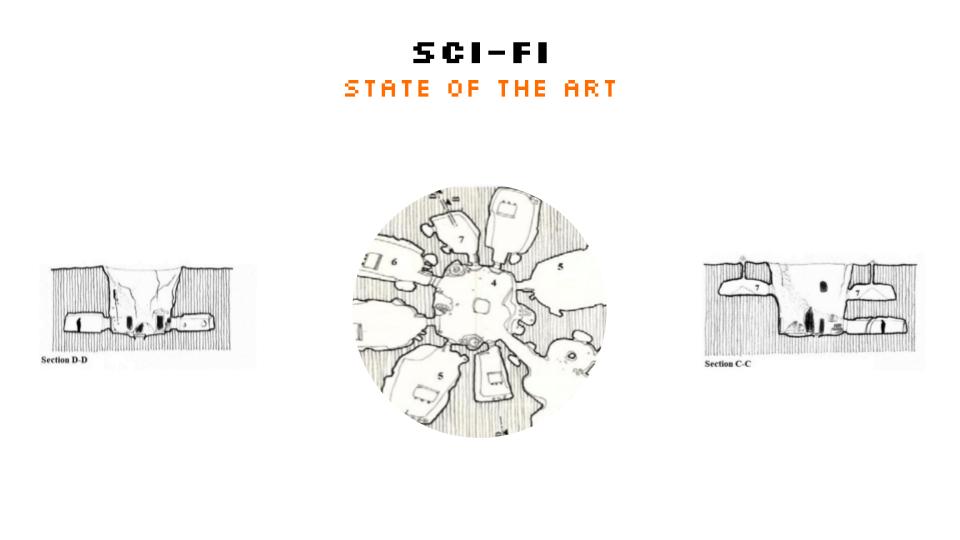
We knew from our research that the best form for both pressure differential and to prevent heat loss was a sphere. The worst form would be a spikey form which is preferred for increasing heat loss such as the form of a heatsink inside of a computer attached to a CPU or a GPU.
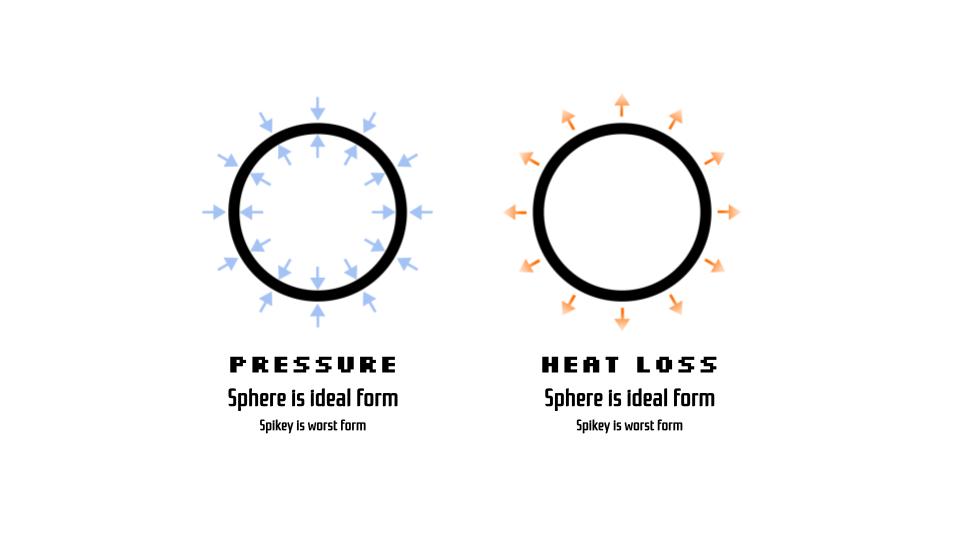
Robotics, Fabrication, & Assembly
We were inspired by the Hexapod Robot (2006) created by Matt Denton and various robot dogs from Boston Dynamics. Midjourney was used to imagine our own hexapod robot that would be capable of carving the ground, storing regolith in its stomach, then moving to another part of the site and 3D printing that material combining the material with some form of binding agent.
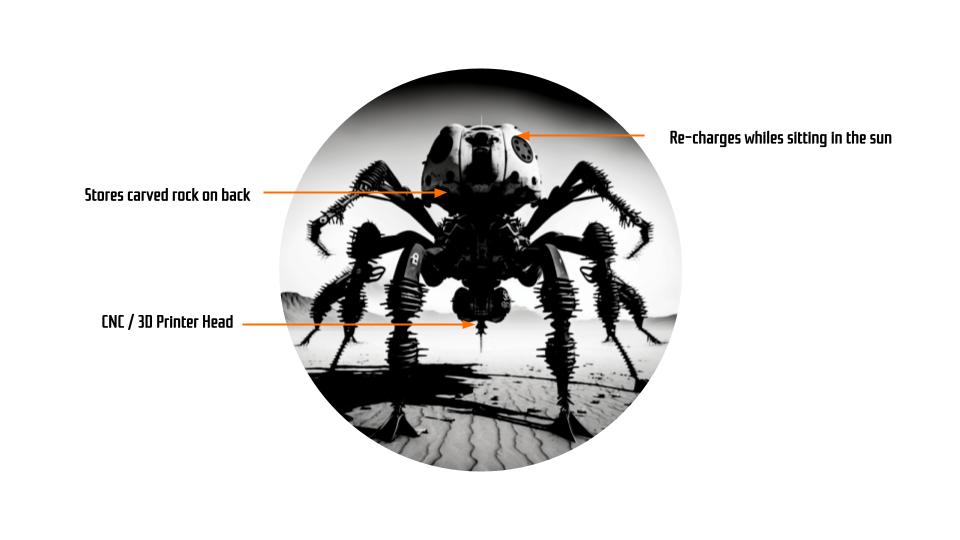
Our timeline would be to send these robots in a non-human mission years ahead of human settlement. They could reshape the Mars terrain to make a habitable environment. A human mission could then go to Mars to complete the interiors of their new home.
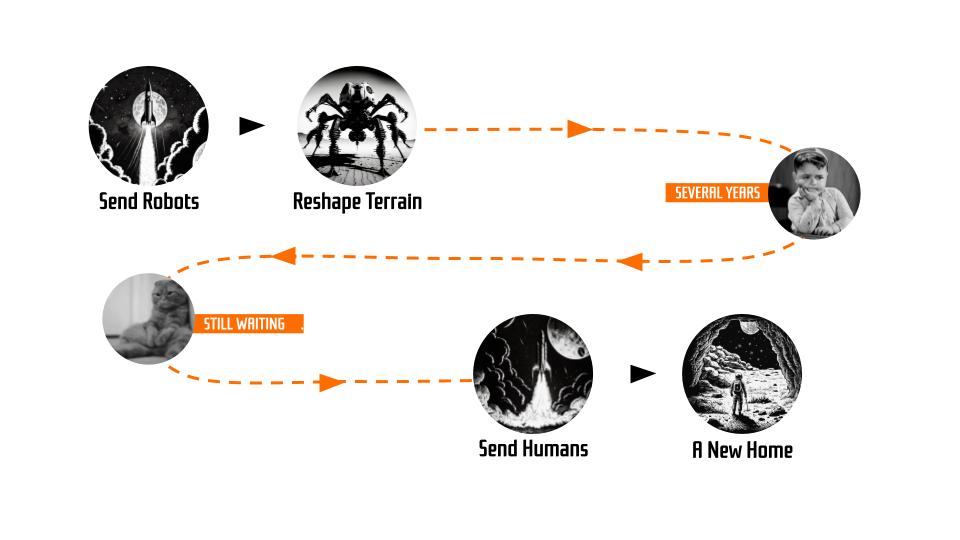
The title of our project Mine(Us) Plus comes into focus now with the .gif below. Our robots will carve the ground below and take that material above ground to 3D print it. A day on Mars is called a sol which is 40 minutes longer than a day on Earth.
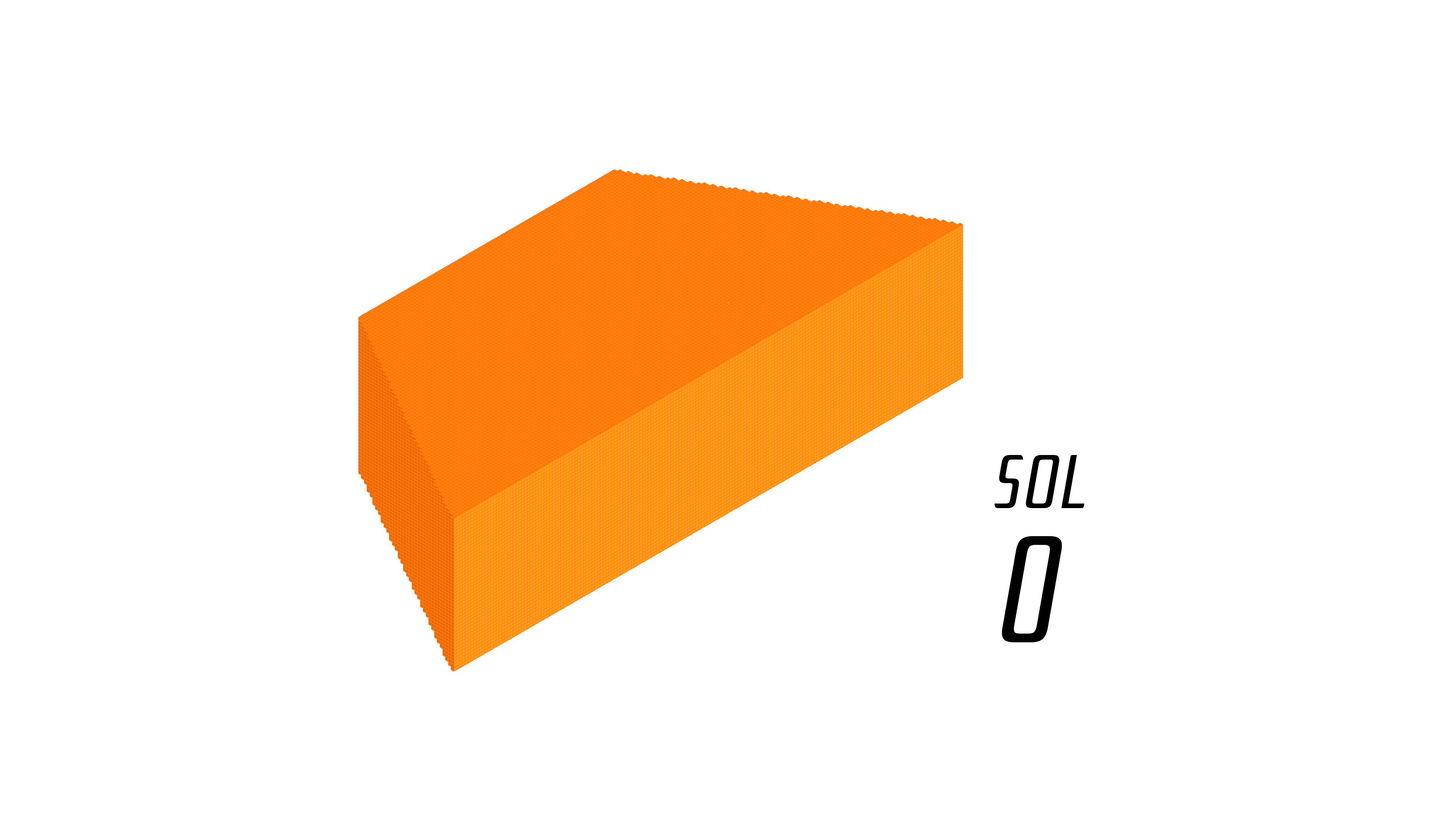
Masterplan: Terrain Relative Construction
The most significant event to date to occur in Jezero Crater is the landing of the Perseverance rover in 2021. While previous landings were pre-assigned fixed locations, Perseverance only knew a rough location it wanted to land in. As the rover was getting ready to land, it would scan the area and analyze the best area to land and direct itself towards that landing spot. This was called Terrain Relative Navigation by NASA.
We use similar algorithmic logic with Grasshopper3D and other parametric software. Our masterplan approach is not to set a fixed location of where to dig with our Mine(Us) Plus robots. Instead, we would like robots to sense the hardness of the rock below at several different depths for every hexagon area of 18m wide. The most optimal areas to dig can be found and the robots can react and dig there.
To determine the depth to bury the metaball geometry, our robots can compare two numbers. The first is the amount of energy to heat architectural spaces above ground that can be up to 100C colder than those below ground, especially at night. The second number is the amount of energy to remove material from the ground. It is important to remember that material to 3D print is going to have to be obtained either way. The void created by digging up material can either be useful to our settlement or just a useless ditch to the side of our site. Our script is aiming to optimize the amount of total energy over the long term.
Interior Planning
Working with a spherical geometry, we created an array of spheres with floorplates to examine the relationship between the diameter of a sphere and the amount of useable area or useable volume of the interior. Spheres below 7m diameter were found to be only suitable for corridors or airlocks as the floorplate had to be on the lower segment of the section to create enough floor-to-ceiling height. On the flipside, we avoided larger spheres that would have long spans unsuitable without the use of materials like steel or concrete and having very deep sections. Our preference became spheres between 7m and 11m.

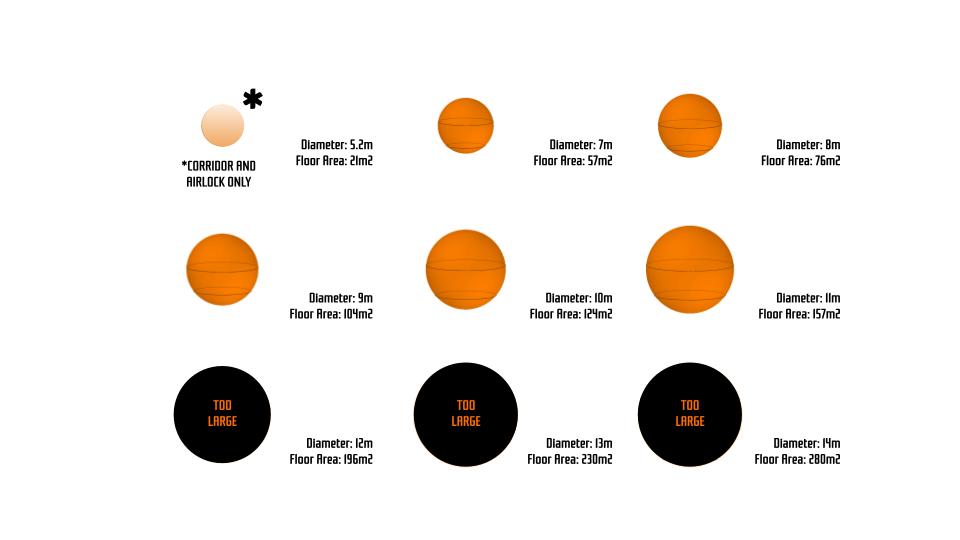
Accommodation modules are inside of our metaball geometry that is both above and below the ground level. The masterplan was established alongside our classmates in a hexagonal grid with width of 36m and a secondary smaller hexagonal grid rotated ninety degrees from the first grid of 18m width. The primary inputs of any metaball geometry are the point centers for which our project places those centers on the control points of the inner hex grid. They then can be moved in the z-axis based on rock hardness as described in the gif above.
Below are examples of accommodation modules for 16 inhabitants and another for 68 inhabitants. The larger module can have larger metaball diameters for control points when not on the perimeter of the module.
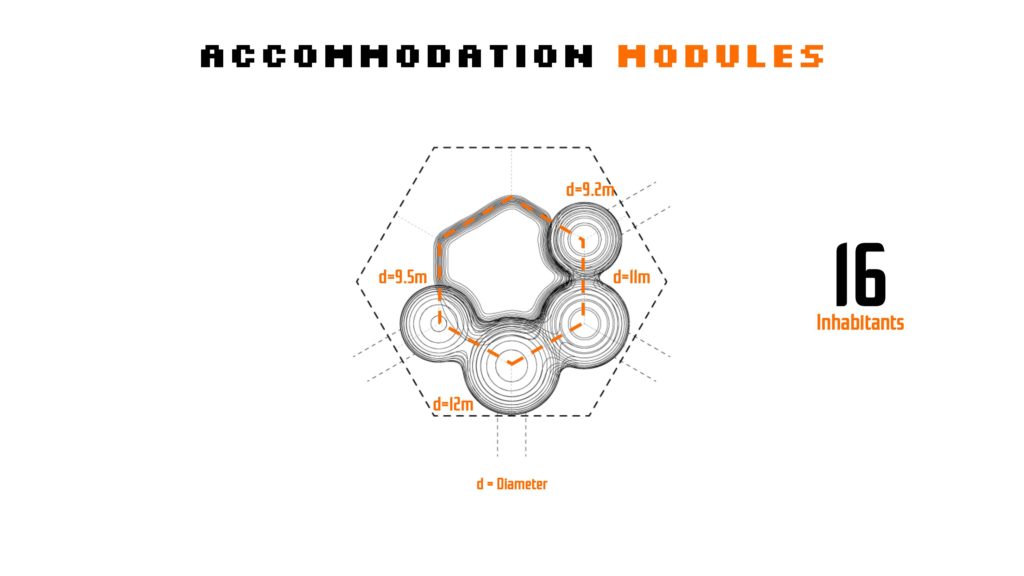
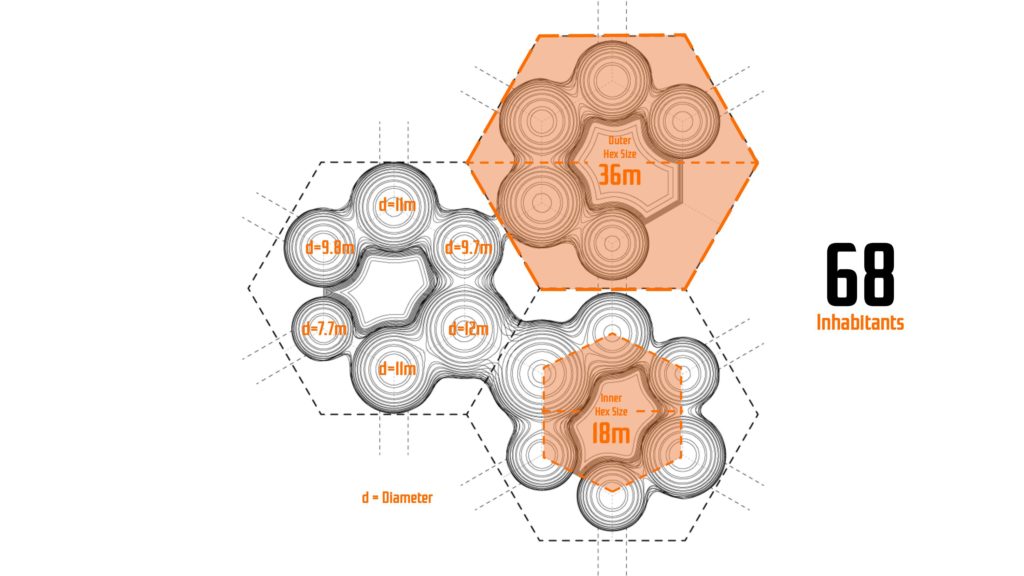
Space Syntax
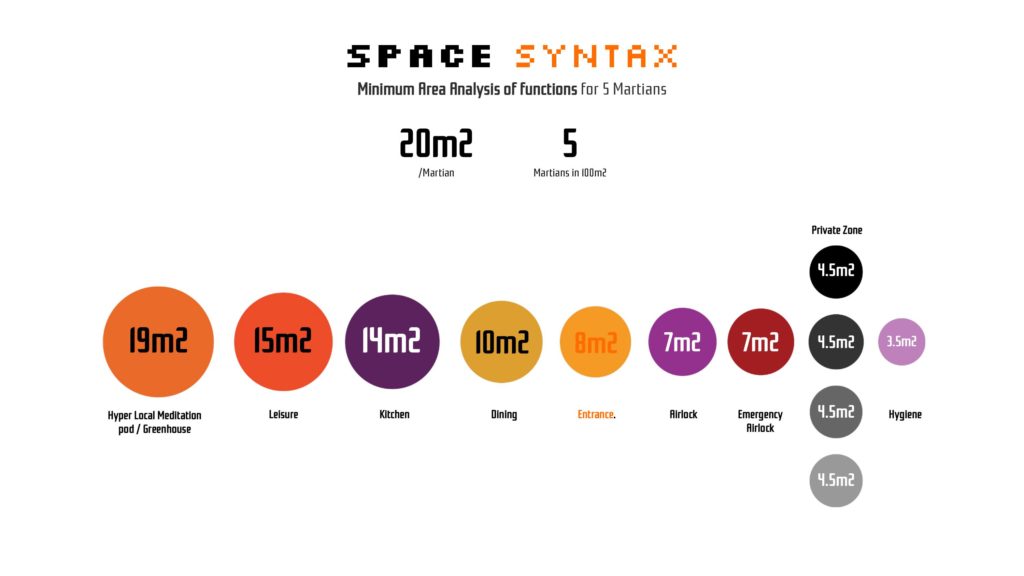
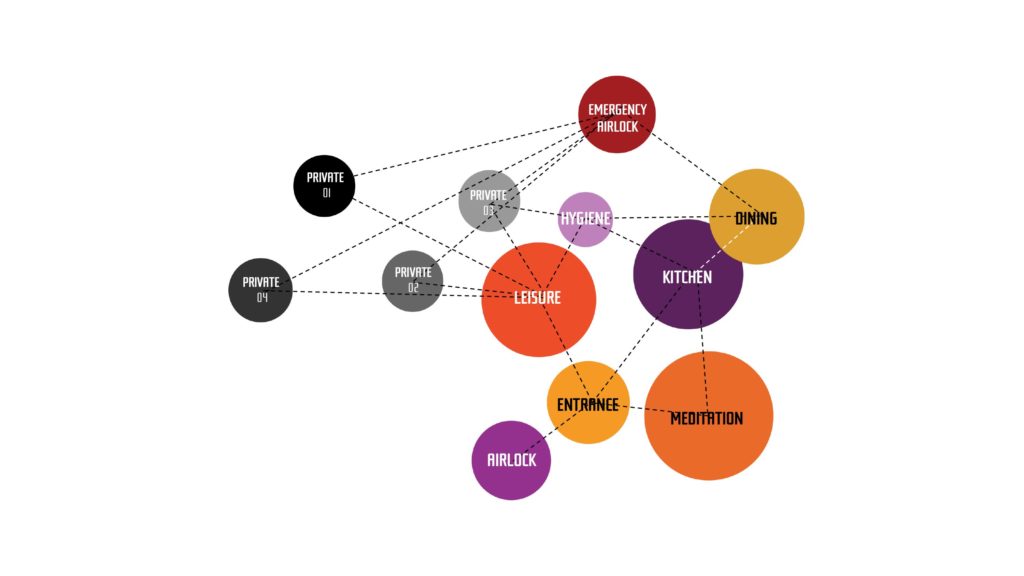
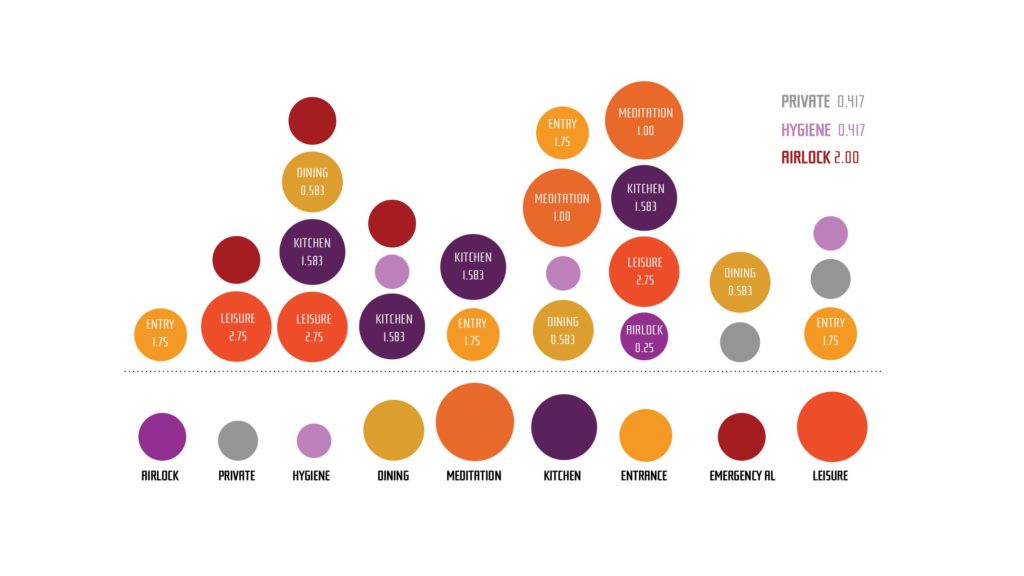
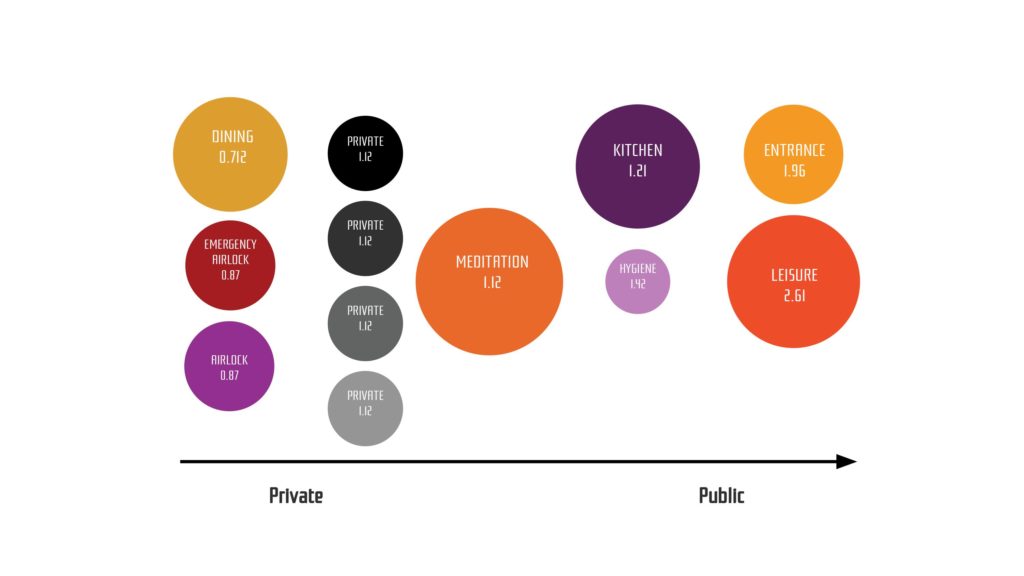
Plans, Sections, & Axonometrics
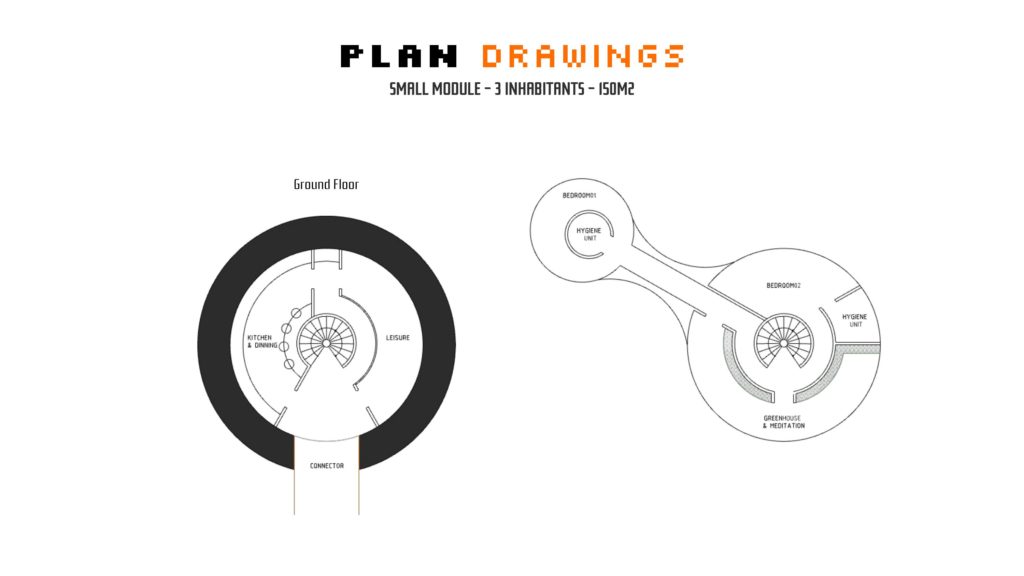
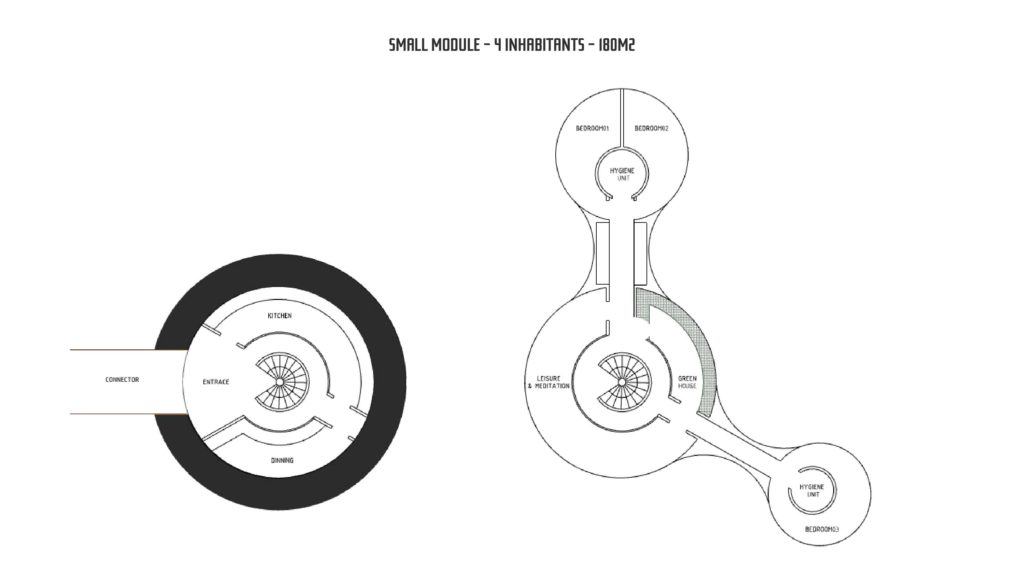
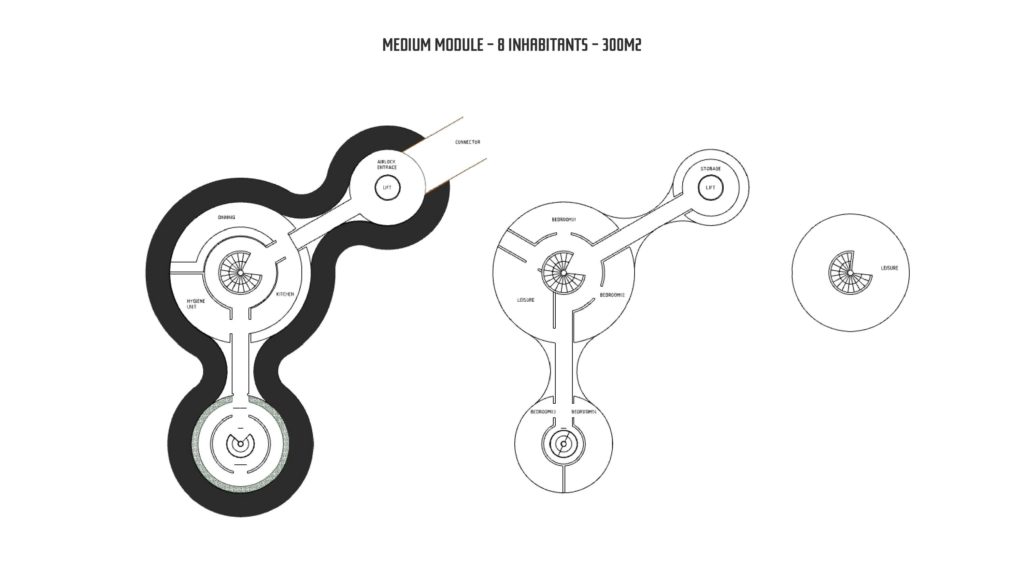

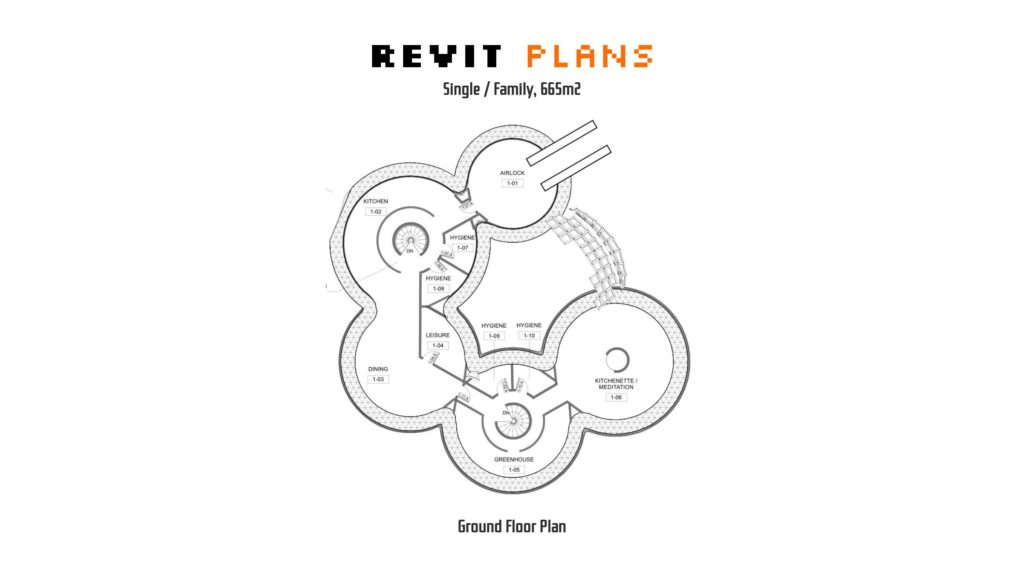
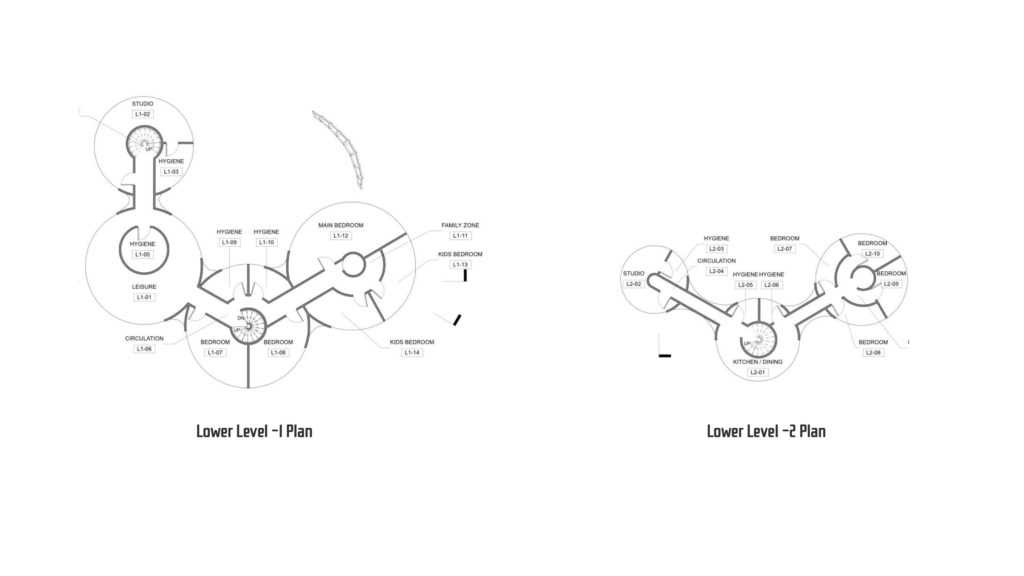



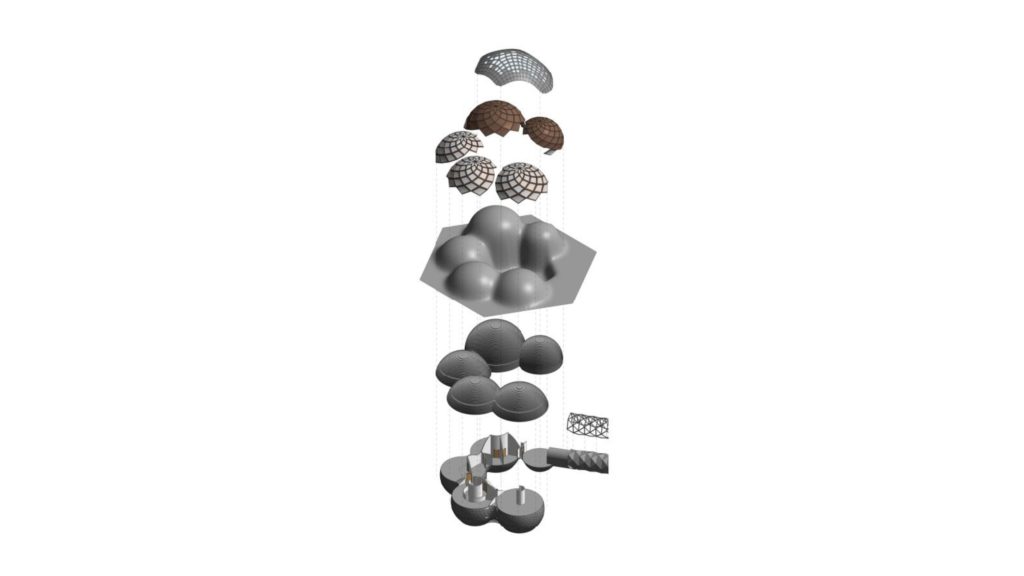
Light and Windows
We think accommodation on Mars where residents spend most of their time including time spent sleeping should be heavily shielded from radiation with up to 2m thick regolith walls as recommended by several experts. Spaces for windows and enjoying the views of Mars should be separated from these cocoons of safety that protect our Martian residents.
The central dug-out courtyard spaces will remain empty at first but later to be domed over by the community with a comparably lighter structure. These spaces allow residents to optionally seek natural light and warmth when available and when they feel like it. They perform a similar function to an Orangerie or sun room in Northern Europe.
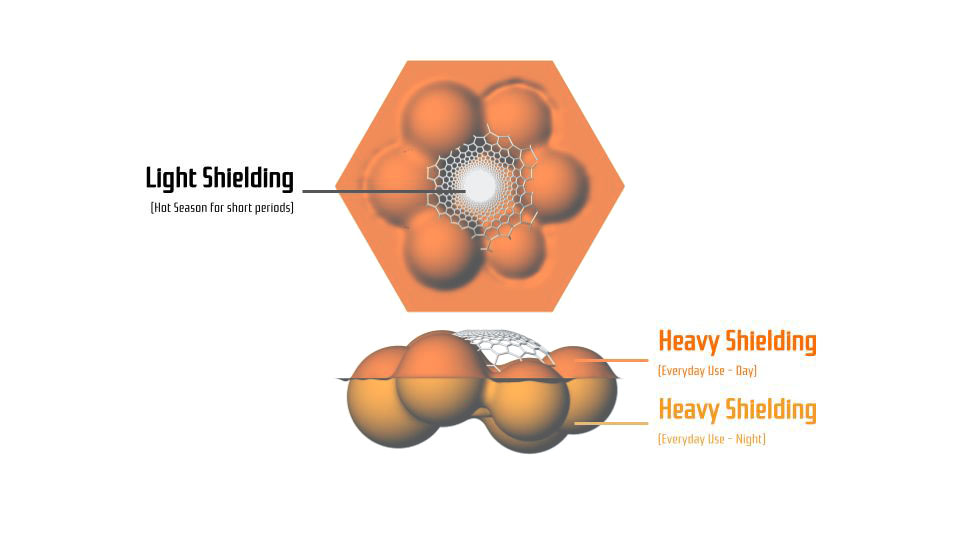
Looking out a window on Earth, you see the landscape, the trees, the plants, the squirrels, and the lizards. You see people walking their dog or cycling their bike. You see groups gather and kids playing. You can open that window letting in a cool breeze on a hot day. On Mars, most of what you would see is the same static scene of the Martian landscape. You could never open that window and there would rarely if ever be any activity outside of that window. There would be no seasonal change such as when the trees gain their red leaves in Autumn or drop their leaves in Winter. We therefore have not prioritized the window as other Mars projects have done as that window on Mars can never be what a window on Earth is. We thought about projects such as the Low-Line in New York City that use fiber-optic cable channels sunlight as a method of getting light into our metaballs without all the radiation. We questioned what is a “real” window with the illustration. Can a screen on the external wall display the same image as a window using external cameras? And as digital data, how might manipulating that data be useful? Dust storms on Mars last weeks or months. Can the window display the view when there was no dust storm? Or can homesick residents display an almost live view of their hometown so that when they return to Earth they are already familiar with changes to their skyline?
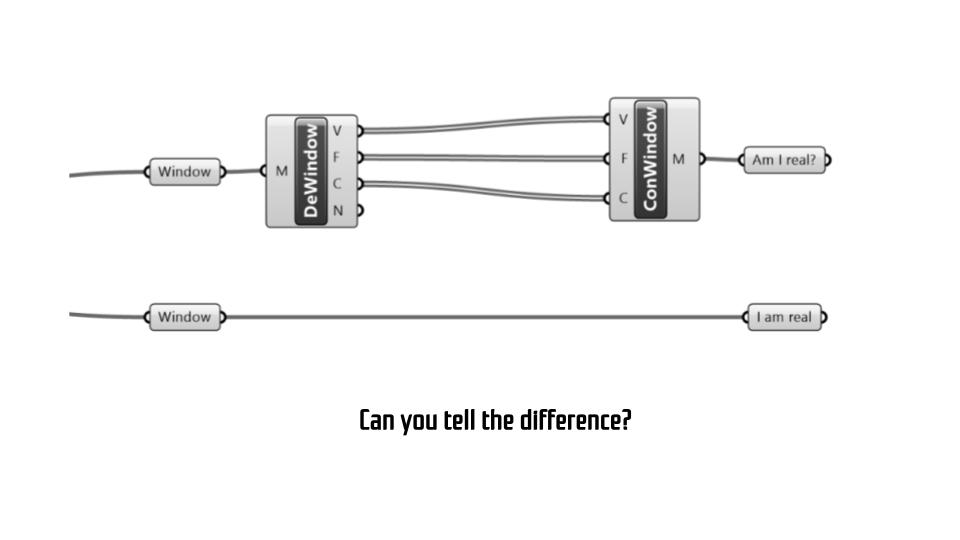
Connectors to Other Groups
Our connectors connected our project to other teams in the masterplan. Each team designed a specific program as below.
G01: Recreation
G02: Food and Energy
G03: Spirituality
G04: Living Room / Third Place
G05: Accommodation (Our group)
G06: Medical Center
G07: Transport
Triangles, Mountain and Valley Lines Turn Any Surface into a Collapsible Volume.
(All for the Low Low Price of $19.95!)

Volume of Expanded Structure = 12,607 m3 (11m Tall x 16m Wide x 80m Long)
Volume of Compressed Cargo = 270 m3 (8m Diam x 5m Deep)
Flat Surface Area = 2,400 m2 (30m x 80m)
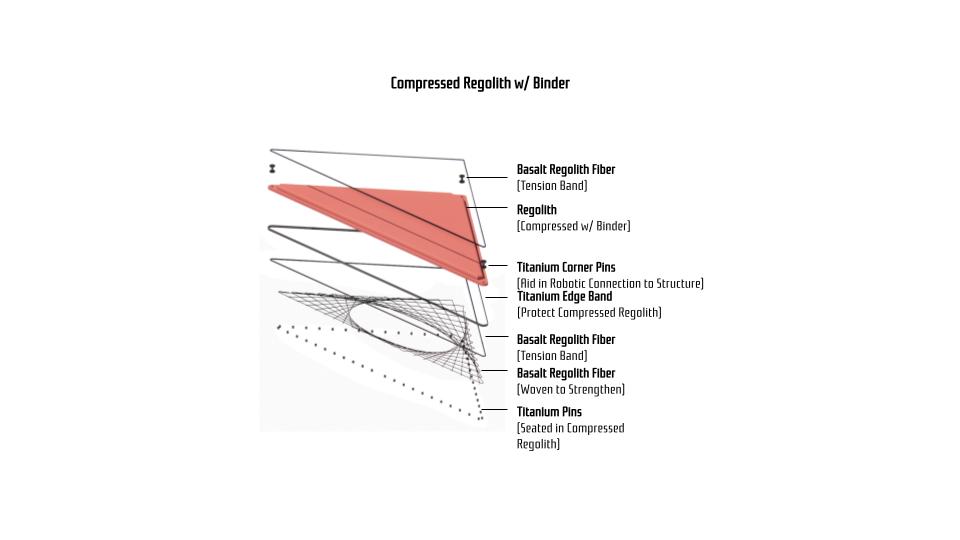
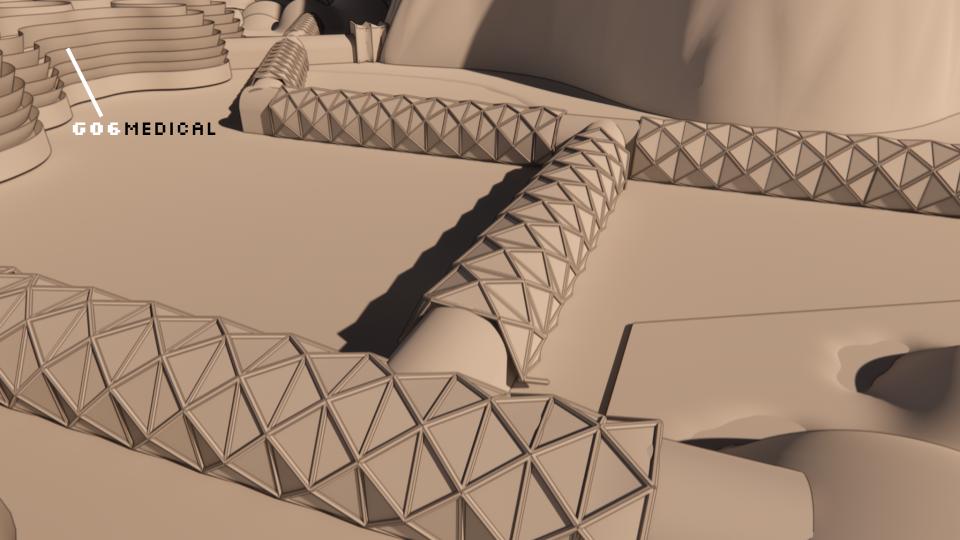

Conclusion
We feel that our project on Mars addressed our primary goal of focusing on how to build in this extremely cold climate discovering interesting research insights often overlooked by those who have previously studied what architecture on Mars might look like. The jury praised our group’s use of computational tools and logic throughout our project from the research stage at the beginning to our Revit plans and sections at the end. If this project was to be brought further, it was recommended that we focus on the interiors and how they might be built in a less standard way more suited to the context of creating them on Mars which does not presently have an IKEA nearby. The interiors could be 3D printed from plastic waste as mentioned in the lecture by Xavier De Kestelier (Hassell) at IAAC or have moving parts as seen in the space-efficient spaces by MIT Media Lab City Science alumni Ori Living.
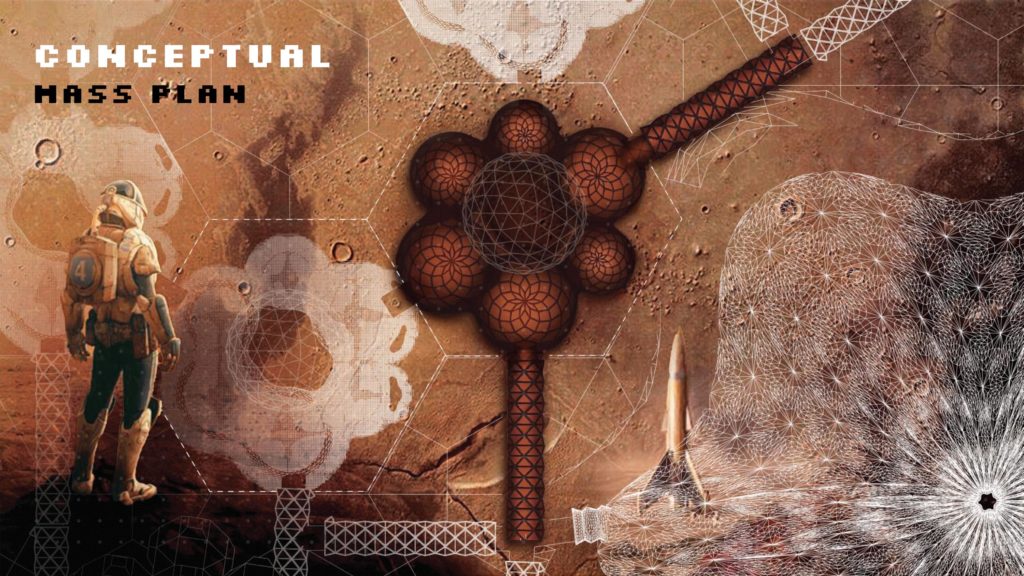

The final crit included guest critics Jens Majdal Kaarsholm (BIG) and Pablo Zamorano (Heatherwick).

